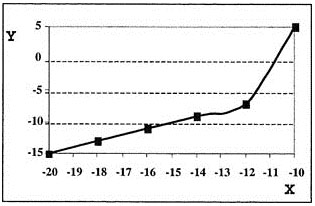What to expect
Applicants for Electrical Apprenticeship who meet all other minimum requirements will be scheduled to take the NJATC Apprentice Selection Test Battery.
The test is administered at our location and takes approximately two-and-a-half hours to complete. It consists of two parts: Math and Reading Comprehension. A short break is given in-between.
Our office receives results from the test approximately two weeks from the test date.
Applicants receiving a score of at least 4 (out of a possible 9) will be advanced to the next step of the application process, a personal interview with the JATC Committee. Applicants who have documented at least 4,000 hours of electrical construction work experience are not required to receive a minimum score for a personal interview, but will be required to take the test so aptitude can be measured.
Aptitude Test Rules
Bring a photo ID to the test. Your ID will be checked. No ID, no test. No exceptions!
Arrive 10-15 minutes before the scheduled test time. Late entries will not be permitted. A late show is the same as a “No Show.”
Calculators may NOT be used during the test. Do not bring any type of calculator. Pencils and scrap paper are provided for computation.
If you do not receive a qualifying score (4 or higher), you will not be eligible to retake the test (at any JATC in the country) for a period of six months. Do NOT attempt to retake the test before the six month period elapses. If you retest before the six month period elapses, your score will not be valid, and another six months must elapse before the next retest.

We accept walk-in applications every Monday during normal business hours. Click the button below to go to our full calendar of meetings, training classes and special events. View Calendar
INSTRUCTIONS
Below are some sample test questions. These questions are similar to those on the actual test, allowing you to know what to expect on the day of your test session.
You should read the sample questions on each test carefully and then examine each of the responses. Only one answer is correct for each question. Choose the response that you think is correct.
If you find some of the sample items to be difficult for you, you may want to review material that is similar to the sample items.
Sample Test Questions
Question #1.
Consider the following pattern of numbers: 110, 112, 107, 109, 104
What is the next number in the pattern?
That’s not correct.
The correct answer is "106"
Question #2.
Consider the following formula: A = B +3(4 - C)
If B equals 5 and C equals 2, what is the value of A?
That’s not correct.
The correct answer is "11"
Question #3.
Consider the following table:

Which of the following choices represents the same relationship as demonstrated in this table?

- Y = x/2 - 5
- Y is equivalent to the difference between the value of X and constant C, where C equals 5.

Select your answer below:
That’s not correct.
The correct answer is "#3. Y is equivalent to the difference between the value of X and constant C, where C equals 5."
Question #4.
Consider the following formula: a = (1/2)b - 4
Which of the following statements is true for this formula?
That’s not correct.
The correct answer is "When the value of b is less than 8, a is negative."
Question #5.
Consider the following formula: y = 3(x + 5)(x - 2)
Which of the following formulas is equivalent to this one?
That’s not correct.
The correct answer is "y = 3x squared + 9x - 30"
Reading Comprehension
This section measures your ability to obtain information from written passages. You will be presented with a passage followed by a number of questions about it. A sample passage is shown below, followed by three sample questions. This passage is shorter than those on the actual test.
Passage:
The timing of New Year's Day has changed with customs and calendars. The Mayan civilization, on what is now called the Yucatan peninsula of Mexico, celebrated the New Year on one of the two days when the noonday sun is directly overhead. In the equatorial regions of the earth, between the Tropics of Cancer and Capricorn, the sun is in this position twice a year, once on its passage southward, and once on its passage northward. At the early Mayan city of Izapa in the southern Yucatan, the overhead date for the sun on its southward passage was August 13. The Mayans celebrated this as the date for the beginning of the New Year. Later at the more northerly Mayan site at Edzna, the corresponding overhead date is July 26. Analyses of Mayan pictorial calendars indicate that they celebrated the New Year on August 13 prior to 150 AD, and on July 26 after that year. This change has been explained by archaeological dating showing that 150 AD was the time that the Mayans moved the hub of their civilization from the southern to the northern site.
Question #6.
According to the passage, the sun at Edzna was directly overhead at noon on:
That’s not correct.
The correct answer is "July 26 and one other date"
Question # 7.
If the Mayans had moved their civilization's center south of Izapa, their new date for celebration of the New Year would probably have been closest to which of the following dates?
That’s not correct.
The correct answer is "September 15"
Question #8.
Based on the information in the passage, which of the following statements is true?
That’s not correct.
The correct answer is "Mayans used calendars to mark the passage of time."

